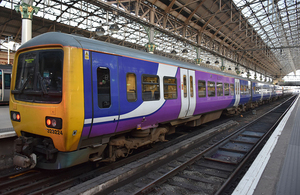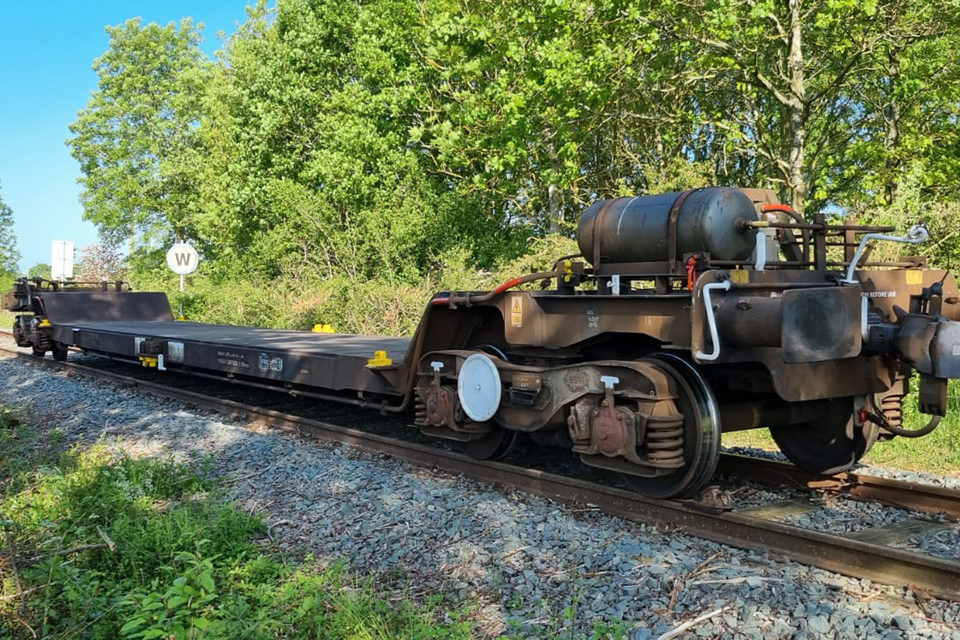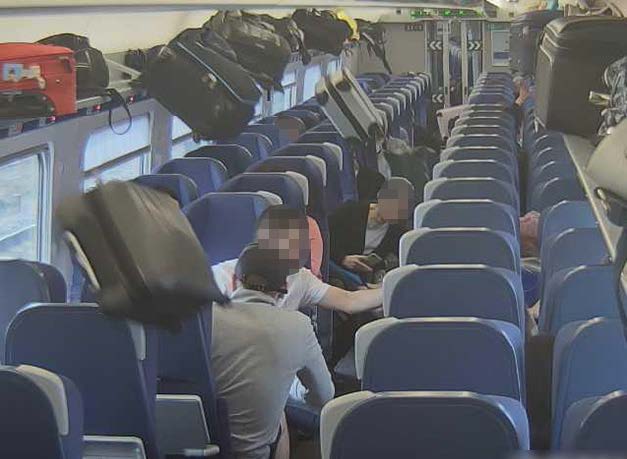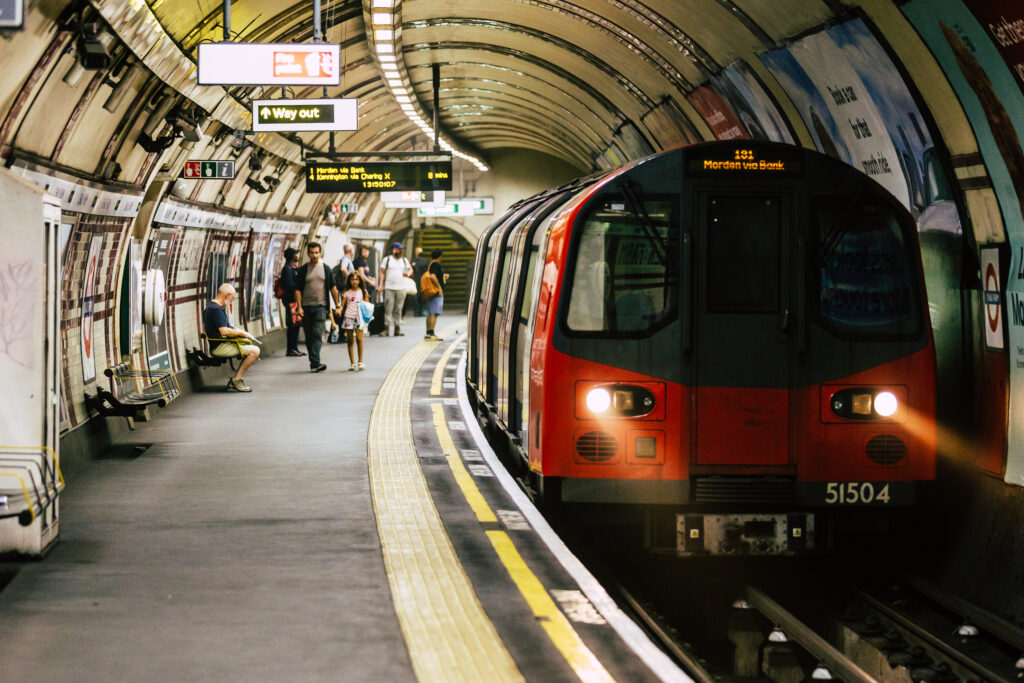Late notices for train drivers rely on them signing on and reading the details that apply to the route they are to drive. Today, it should be easier using the technology we all have available. Over-speeding despite the imposition of hot weather restrictions and the unexpected routing of passenger train services via switches and crossings through a Peterborough platform are worrying when over-speeding is the result. On 17 April and again on 4 May, over-speeding could easily have resulted in an overturning accident.
The London Underground’s latest trapped and dragged incidents are a recurring event which should benefit from reporting, analysis, and actions. Finally, an RAIB report published on 27 July about a rail embankment and formation washout emphasises the importance of close working between Network Rail, the Environment Agency and train operators. Fundamental improvements need to result in other areas liable to track flooding.
Hot weather over-speeding
A Rail Accident Investigation Branch (RAIB) news story dated 10 July describes over-speeding incidents at Wood Green and Melton Lane Level Crossings which both occurred on 12 June. On the previous day, a 20mph restriction, described as “hot weather related” was imposed between Brough and Ferriby stations near Hull. Two trains were reported as “passing over the restriction whilst travelling at a far greater speed then the restricted speed.” RAIB will publish a Safety Digest.


MOD wagon runaway
On 25 May, in Warwickshire, an empty wagon ran away from the Exchange Sidings at the Ministry of Defence (MOD) Munitions Depot at Kineton. The wagon came to a stand after running for over a mile. It passed over two farm crossings and one public road crossing! No one was injured, and the only damage caused was to a gate in the yard. Before running away, the wagon had been secured using its parking brake by staff working for Keuhne and Nagel who were under contract to the MOD. RAIB is investigating.
Uncontrolled train evacuation
This happened at 17:43 on 5 May. A northbound Northern Line train leaving the station was halted by the operation of a passenger emergency alarm. It was operated after passengers smelled burning. The train came to a stand with one car fully inside the tunnel and another partially inside. Passengers broke windows and used the car-connecting doors to exit the train. There were no serious injuries and the Fire Brigade found no evidence of a fire. Following their inspection, London Underground maintenance staff “determined the probable cause of the burning smell as being the trains braking system.” RAIB is investigating.
Styal Station unsafe movement of train
RAIB is also investigating an incident at Styal. On 3 May at 15:26 a passenger train operated by Northern Trains departed from Styal Station in Cheshire. The train was a three-car 323 electric multiple unit. Immediately before the incident, the train had technical difficulties; its driver was unable to release the brakes and take power. Northern Train’s Control instructed the driver to isolate the safety systems relating to the doors so that the train would move. It travelled for approximately 10 seconds with the doors open, but when it reached 5kmph a safety system automatically caused the doors to close. No one was injured although people were moving towards the train, and one was standing in the open doorway.

Over-speeding with wheels in the air
On 11 July RAIB released its report 06/2023 on the Lumo service over-speeding that occurred around 10:20 on 17 April. The 08:20 Newcastle to London Kings Cross service passed over Spital Junction at the north end of Peterborough Station at 76mph. The maximum permitted speed is 30mph over the junction, reducing to25 mph. The speed caused sudden sideways movement of the coaches.
Passengers were thrown from their seats and luggage fell from overhead storage. The train did not derail but: “a post incident analysis indicated that the train was close to a speed that would have led to it overturning and it was likely that some of the vehicle wheels lifted off the rails.”
The train driver had not reacted to the signal indication received on the approach to the junction. The signal indication was that the train would take a diverging route with a lower speed than the straight ahead one. This was not expected. The report states that “driver’s awareness of signal conditions that could be presented on approach to the junction and their training were not sufficient to overcome their expectation.”
RAIB recommendations are: (i) for Lumo to review processes to ensure it effectively controls the risk of over speeding at diverging junctions; (ii) Network Rail to identify junctions where there is greater potential for over speeding to occur and work with operators to share information on the associated risks; and (iii) Network Rail and train operators to consider and implement risk control measures at those junctions identified in the second recommendation. Finally, Lumo is to minimise the risks from falling luggage on its services.
Another over speeding incident at Spital Junction
Less than a month later, at 13:00 on 4 May, the 09:54 Sunderland to Kings Cross service, operated by Grand Central Railways, passed over three sets of points at a speed of 65mph. The maximum permitted speed is 30mph, reducing to 25mph. Due to its speed, the train lurched sideways resulting in several minor injuries to passengers with some being thrown from their seats. The train then stopped at Peterborough Station under emergency braking. It did not derail. It was not scheduled to stop at Peterborough but was travelling on the fast line before being routed onto the slow line via the points where the over speeding occurred. The route to the slower line was being displayed by the junction signal on the approach to the points.
RAIB was already investigating the not dissimilar incident involving the Lumo operated passenger train at the same location.

Trap and drag accidents
RAIB’s news stories published on 21 June include ‘trap and drag’ accidents in London at Archway on 18 February and Chalk Farm on 20 April. Both occurred on London Underground’s Northern Line.
At Archway at 23:00 hours a passenger’s coat was trapped in the doors of a southbound train. The passenger was dragged for just two metres until the coat pulled free and then fell to the ground on the platform receiving serious injuries. The train did not stop immediately, but continued for some 20 metres before it did so.
At Chalk Farm the trapped passenger was dragged for about 20 metres before the train came to a stop.
RAIB’s investigations will consider “the actions of those involved, arrangements to manage and control risks to passengers boarding and alighting, post incident platform management of train interface incidents and underlying factors.”
Bulwell Nottingham tram derailment
Another RAIB news story refers to a tram derailment that occurred on 12 June at Bulwell in Nottingham. At 17:00 hours a southbound tram, travelling at 19mph derailed on a set of facing points as it approached the Bulwell tram stop. The tram struck an overhead line support pole. “Significant damage was caused to the tram and tramway infrastructure.” There were around 30 passengers on the tram and the driver and one passenger suffered minor injuries. RAIB’s investigation will include the actions of those involved; together with, “that which may have influenced them, the management of drivers working on the Nottingham Express Transit network, including their training and competence, the status, maintenance and performance of the points and signalling equipment and any underlying factors.”
Close call or very near miss?
Network Rail’s Safety Central website dated 26 June includes NRL 23-03 for “Shared Learning”. The exact location is not named but is identified as being in North Essex and was unfamiliar to the individual involved. The incident took place on 13 May 2022. At 01:50 on that morning, a tamper operator arrived at the site, signed in, and received a briefing from the Controller of Site Safety (COSS). The operator was fatigued and was a late substitute to make up a three-person tamper crew.
Woken by a phone call, the operator drove from Kent to the North Essex site, one with which he was unfamiliar. The operator first walked alone in the four-foot of the line under possession but then stepped into the six-foot. The adjacent line was open to traffic at line speed. A train passed and he then moved back into the six-foot and continued to walk towards the tamper. The incident was not reported in real time but is described as “very close to being a fatality.” It was reported only as a ‘Close Call’ at the end of the shift. The COSS did not accompany the operative to the worksite after becoming distracted. The tamper was already being operated by a two-man crew.

Enfield Town Station buffer stop collision
This accident occurred way back on 12 October 2021 at 08:21 in the morning. The passenger train ran up and on to the buffer stop at 13kmph and came to rest with leading wheels 800mm above the running rails. Sixteen metres before reaching the buffers, the train was travelling at just 16kmph. The driver applied the emergency brakes just before hitting the buffers. The RAIB report cites “loss of awareness” probably as a result of fatigue as the cause.
Post accident drug and alcohol testing gave a “positive result for a recreational drug”. The speed of the train was too low for it to trigger the train protection system. The driver had not reported fatigue, nor had it been identified by his employer, but “his personal circumstances made him vulnerable to fatigue”. The RAIB report makes two recommendations. First, “Arriva Rail London are to encourage staff to report fatigue that could affect their ability.” Second, Network Rail with the RSSB are to “improve the risk assessment process for collisions with buffer stops at terminal stations”.
Three learning points are also identified: (i) a reminder that engineering safeguards do not protect against all events; (ii) a reminder to train staff to report fatigue; and (iii) requirement to comply with their employer’s drugs and alcohol policies.
The report was completed in November 2022 but, after receiving representations from the Crown Prosecution Service about “ongoing legal proceedings”, the RAIB decided not to place a copy of the report on its website. The press release now advises that “the state of those proceedings has now changed”. There were 75 passengers on the train, but none required hospital treatment. The driver had been involved in three previous safety incidents.
Washout between Reedham and Haddiscoe
RAIB report 07/2023, published on 27 July, details its findings on a track washout between Norwich and Lowestoft on Sunday 30 January 2022. The passenger train was between Reedham and Haddiscoe when its driver saw flooded track ahead. There were five passengers and a guard on board. The driver was preparing to return to Reedham, but there was a large void under the train and as the train moved it began to lean. Driver, guard, and passengers evacuated the train.
The report states that localised spots in flood defences had allowed water to enter the railway despite the work carried out to prevent this. Pointedly, the report says that “Network Rail flood risk processes were not effective”. It adds that the “Environment Agency’s management of flooding did not and was not required to account for localised flooding of the railway,” and that “Network Rail was not managing the risks to its asset”. No strategy was in place to protect the railway from flooding due to the lack of effective collaboration between the Environment Agency and Network Rail.
The report makes five recommendations. First it recommends the Environment Agency and Network Rail develop appropriate flood risk management alongside Haddiscoe Cut. Recommendations two and three advise the integration of flood risk into weather management strategies. Recommendation four calls for improved interaction between Network Rail and others with responsibility for tidal flood defences in England and Wales, whilst recommendation five is similar in intent but applies in Scotland.
RAIB Annual Report for 2022
In his annual report introduction, RAIB Chief Inspector Andrew Hall refers to 2022 as being a difficult year that was affected by the pandemic. RAIB was deployed on 22 occasions, leading to 11 investigations and nine safety digests being published, together with 14 full investigation reports. Chief Inspector Hall and his teams have been busy. As a result of their work, four letters were sent to coroners, one to industry, and interim advice went to other organisations.
The report identifies six “recurrent themes” for 2022. They are the safety of trackworkers, railway operations, management of bad weather, safety of people getting on and off trains, safety of level crossings, and the management of low adhesion.

